Archaeologists ave uncovered a 2,000-year-old sarcophagus with perfectly-preserved ancient mummies inside. The "unprecedented" discovery was made in the historic "tomb of Cerberus" in Naples, Italy.
Archeologists have been left stunned after finding an ancient mummy that has been perfectly preserved for thousands of years in Italy, according to the Daily Mail.
The team made the 'unprecedented' find after unsealing the 2,000-year-old sarcophagus in the historic 'tomb of Cerberus' in Naples.
The remains had been preserved by plant-based creams that were applied on the bodies prior to being sealed in the chamber — supplying new and detailed evidence that reveal how Ancient Rome embalmed its own dead.
One of the bodies was found covered in a shroud, surrounded by grave goods, which the team unwrapped and found the individual was perfectly preserved.
The particular care given to the deceased and the chronology of the objects found suggested that he may have been the founder of the family for whom the mausoleum was built.
Archaeologists have previously found a large number of burial sites in the same area, which date from the Roman Republic era (510 BC to 31 BC) to the Roman Imperial Age (31 BC to AD 476).
The 'tomb of Cerberus,' located in Giugliano, was discovered in 2023 after archaeologists uncovered the boundary of the necropolis.
A deeper analysis revealed the structure was the entrance to a chamber tomb, which featured a stunning fresco depicting Cerberus, the three-headed dog from ancient Greek mythology that is believed to be the guard of the underworld.
Guigliano, located in Campania, was colonized by the ancient Greeks between the 8th and 7th centuries BC.
The tomb was discovered by the Superintendency of Archaeology, Fine Arts, and Landscape, who were not only shocked by how well-preserved the bodies were but by the method used.
Researchers plan to share images of the newly found mummies at a later date.
The remains had been lathered with cream made from chenopodium, a genus of perennial herb colloquially known as goosefoot, and absinthium (wormwood).
The combination has been found on remains in the past, including the body of a 17th-century bishop found beneath a cathedral in Sweden.
The mummy that has been unwrapped, however, was covered in a shroud that experts believe mineralized due to the climate conditions inside the chamber.
The burial chamber was discovered after archaeologists spotted a wall built using an ancient Roman construction technique known as opus incertum.
The method used irregularly shaped and randomly placed uncut stones, which emerged around in the second century BC.
It later emerged that this was the front wall of the tomb, which had been sealed with a heavy slab made of tuff — a light, porous rock created out of volcanic ash and other sediments.
To get inside the burial chamber, the archaeologists had to carefully remove the tiles covering the ceiling opening, which revealed what experts said was an 'unprecedented' discovery.
They inserted a micro camera into the small opening, allowing them to see the bodies enclosed inside.
The project, financed by Italy's Ministry of Culture, is now conducting DNA analysis on the mummified human remains, to identify the multiple bodies uncovered.

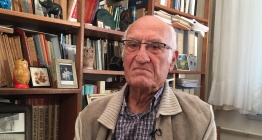

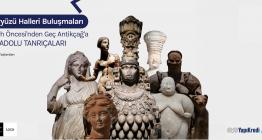

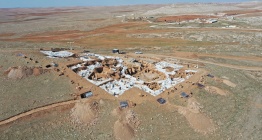
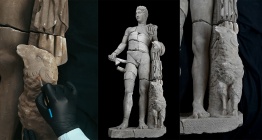
 Türkiye'deki tescilli mağaralarda 30 memeli türü ve endemik canlılar keşfedildi
Türkiye'deki tescilli mağaralarda 30 memeli türü ve endemik canlılar keşfedildi  Teos Antik Kenti'ndeki Dionysos Tapınağı'nda kazı ve restorasyon çalışmaları devam ediyor
Teos Antik Kenti'ndeki Dionysos Tapınağı'nda kazı ve restorasyon çalışmaları devam ediyor 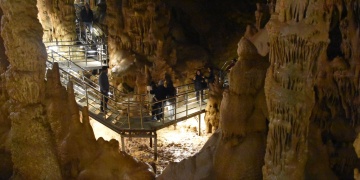 Gümüşhane Karaca Mağarası'nda turizm sezonu başladı
Gümüşhane Karaca Mağarası'nda turizm sezonu başladı  Euromos Antik Kenti'ndeki Zeus Tapınağı restore ediliyor
Euromos Antik Kenti'ndeki Zeus Tapınağı restore ediliyor 




